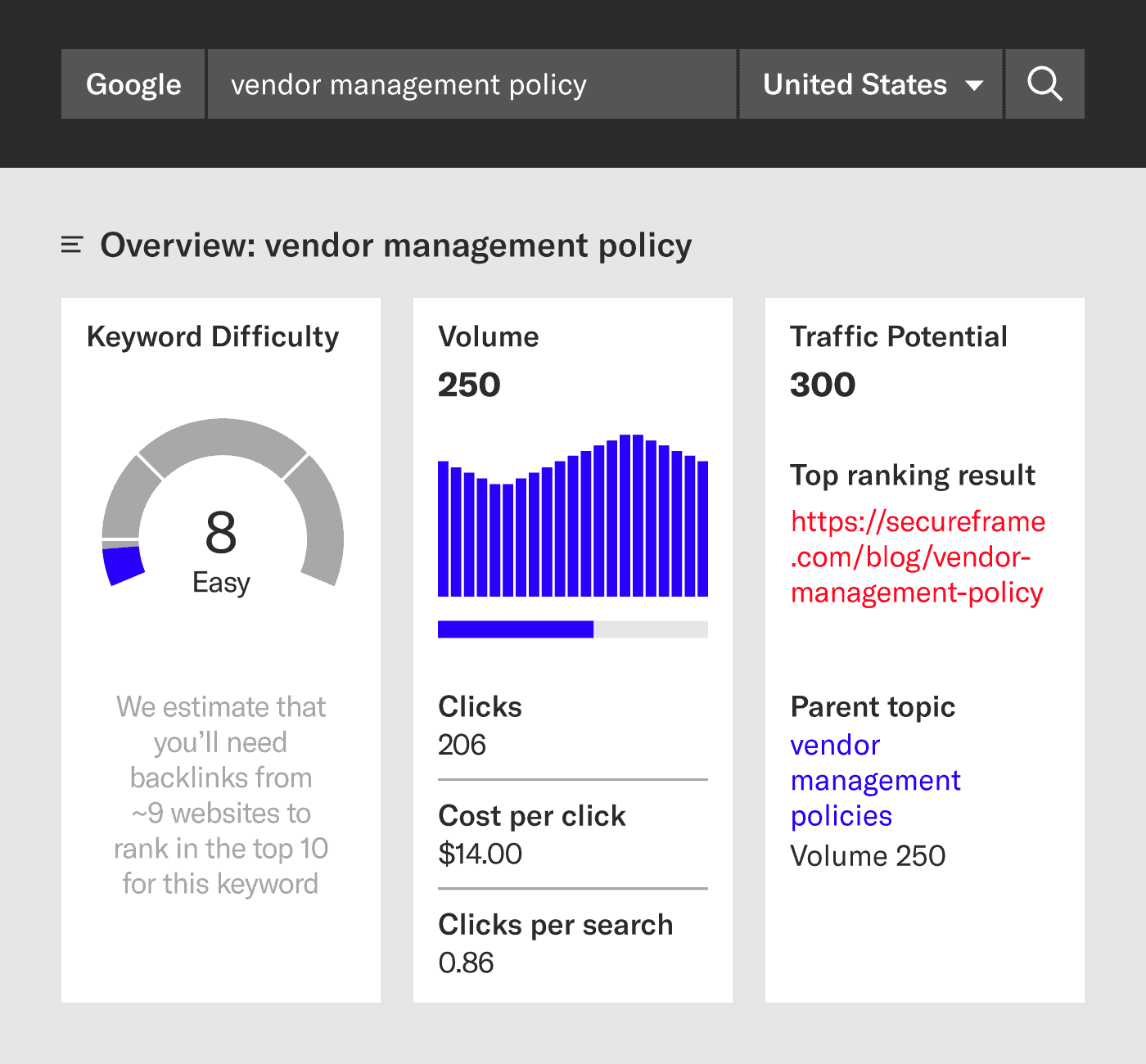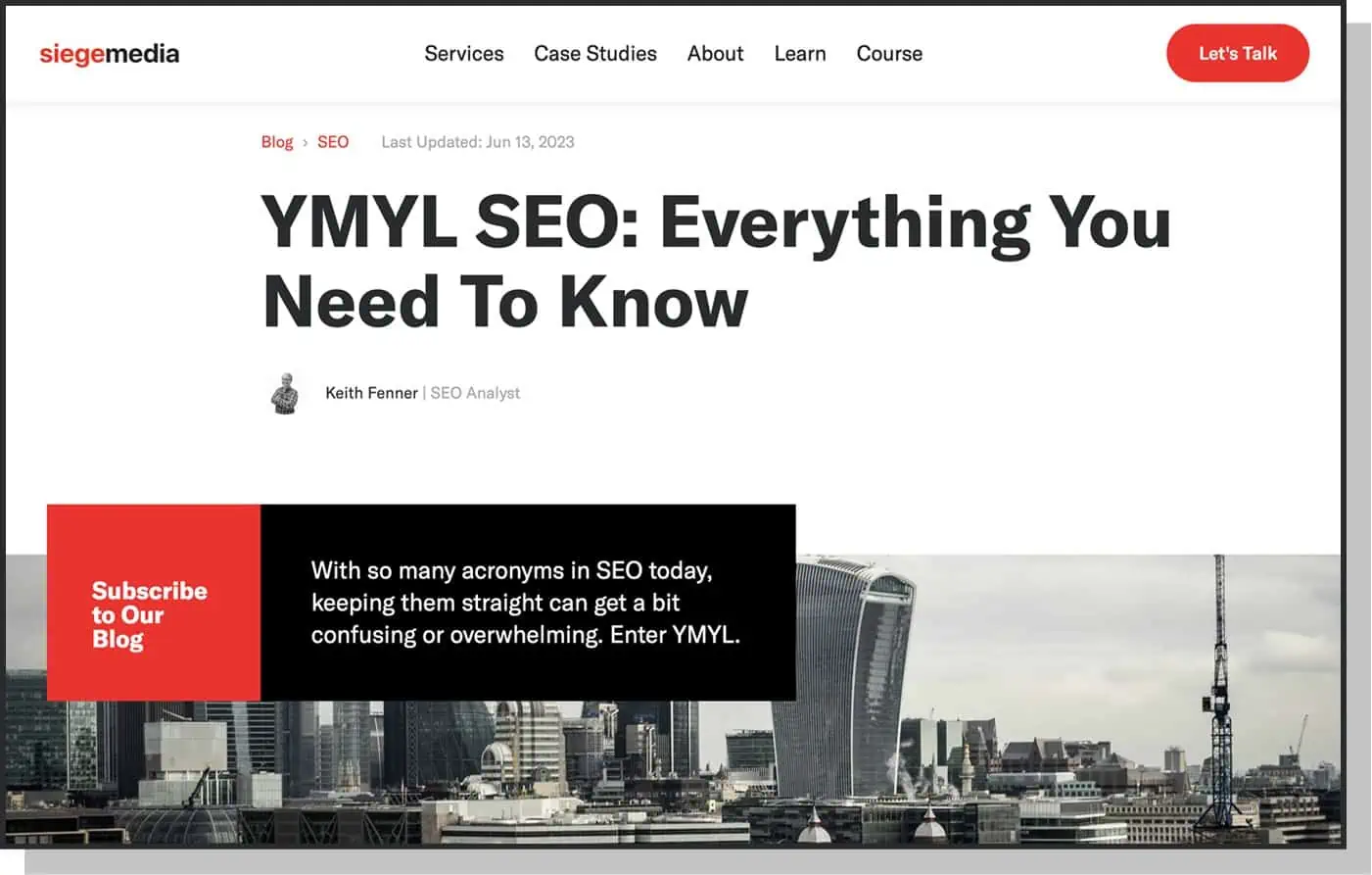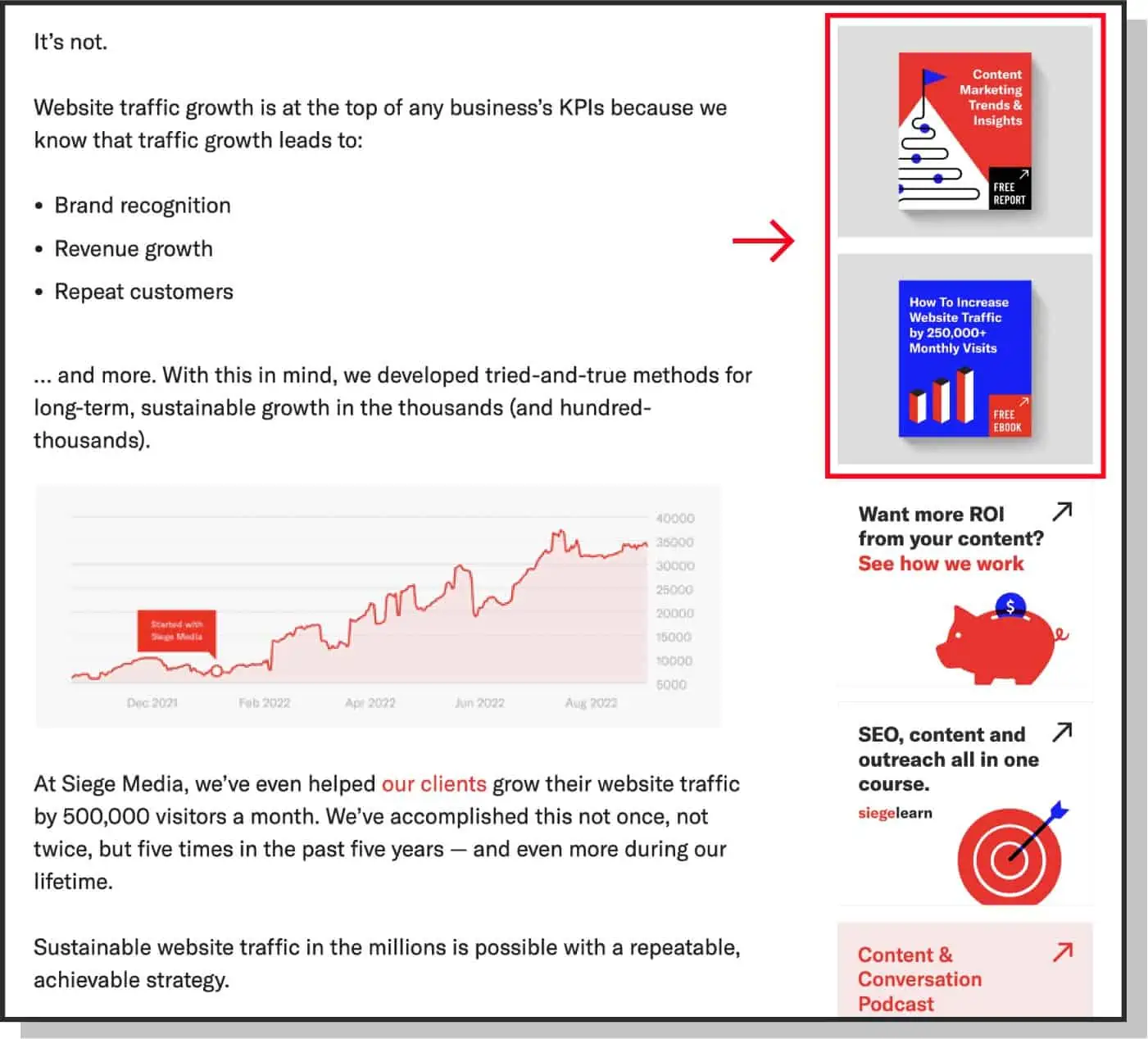When it comes to B2B, there’s a lot for buyers to consider. Due to this longer sales funnel, it makes sense that 54% of businesses are increasing their budgets and making greater investments in SEO and content strategy unlike ever before.
Whether you’re investing in SaaS, manufacturing, or, I don’t know, SEO and content marketing services, B2B services are typically large investments for companies — and therefore demand lots of consideration and research ahead of time.
Beyond that, B2B can be complex — especially in SaaS. Your product may be a game-changer for potential clients, but if they’re unable to understand its value, you may lose out on prospective customers.
As a result, it’s up to B2B companies to demystify the nuances of their industry so customers know exactly what they’re buying — and why they need it.
So, how can you pull this off?
Like in B2C, SEO-focused content is an excellent way to attract and educate users. But, with B2B, the organic arena presents a new set of challenges and requires a more adaptive approach.
Stay with us as we break down the keys to an impactful B2B SEO content strategy with a few examples of effective strategies in action.
- What Is B2B SEO?
- How Is B2B SEO Different Than B2C?
- Create a B2B SEO Content Strategy
- B2B SEO Content Strategy Tips
- Plan a B2B SEO Content Strategy
What Is B2B SEO?
B2B SEO involves optimizing your website and content so it’s visible to key decision-makers at a company.
When strategizing for B2B, you’re not creating content with everyday consumers in mind, but instead for higher-ups looking to make impactful decisions for their organization.
While the pillars of an SEO content strategy remain the same in B2B as they are in B2C, a B2B strategy requires a comfortable understanding of your audience and strategic prioritization. Here are a few ways that B2B SEO separates itself from B2C.
How Is B2B SEO Different Than B2C?
Like we said, B2B SEO presents a unique set of challenges that make strategies different from B2C, mainly due to a more complex sales funnel.
Decision-making in B2B is multi-faceted, and stakeholders debating investing in SaaS will typically have more questions compared to a consumer browsing the best oven mitts.
The complexity of the sales funnel seeps into SEO, creating challenges for strategists, especially when it comes to creating content. Some of these challenges include:
Lower Search Volumes
In niche B2B industries, it’s natural that search terms are less known and yield little volume — which can make keyword research difficult.
However, lower search volumes often come with high traffic value, making the top positions not only more attainable, but even more valuable despite that lower volume.
In the image below, you’ll see that the term has a relatively low search volume (SV) and low keyword difficulty (KD), but a cost per click (CPC) of 14.
If you multiply the CPC by the volume, you get $3,500 — the keyword’s traffic potential. So while the search volume of the keyword is low, there’s still a lot of value in ranking for it.
Fewer Conversions
When you think about B2B vs. B2C, it makes sense that there are fewer conversions.
In B2C, decisions happen quickly, and can largely be made by anyone. In B2B, however, the buying process is longer, and there will be more stakeholders involved in the decision-making process.
Denser Content
Topics in B2B are rarely simple or straightforward, especially in some verticals. As a result, content creation generally requires a longer preliminary research process, more intense editing, and secondary review by multiple stakeholders.
Whereas B2C content can be churned out relatively quickly, you need to handle B2B content with a bit more care.
What does this content look like?
- Guides
- eBooks
- Case studies
- White papers
- Annual reports
Comprehensive guides, eBooks, and case studies tend to perform well in B2B since topics generally are layered and require more detailed explanations. It can often be hard to tell the full story in a 2,000-word blog post in B2B, so it’s sometimes best to put more resources into longer-form content.
Specialized Personas
When creating content for B2B, you’re targeting decision-makers in an organization rather than consumers casually browsing products. As a result, you have to adjust tone, voice, and language so it fits your target audience.
This means toeing the line between casual and formal voice and explaining concepts adequately and succinctly while ensuring the language isn’t too high-level.
It’s a difficult line to walk, and only the best B2B content strategists are able to strike the right balance.
How To Create an Effective B2B SEO Content Strategy
When it comes to creating a B2B SEO content strategy, there are a few musts. Here are some best practices for driving organic traffic and conversions in B2B:
1. Perform Audience Research First
In more technical verticals, it’s important to start with audience research before diving into keyword research.
Like I mentioned earlier, you won’t find very high-volume keywords in niche B2B industries, so it’s critical that the keywords you go after are hyper-focused to the right audience.
There are a few common keyword frameworks that tend to convert in B2B. These are:
- COMPETITOR vs you
- PRODUCT cost
- COMPETITOR alternatives
- INDUSTRY JARGON
- What is INDUSTRY JARGON
- KEYWORD template
- PRODUCT vs PRODUCT
At Siege, we tend to do this often with industry jargon, as these types of queries are typically low difficulty and are being searched by decision-makers within the industry.
2. Generate Authority Through Ranking
Doing manual outreach in niche B2B industries can backfire because of how small these markets are.
If you attempt to do manual outreach, you may find yourself stretching the topic out and actually losing authority because you’re presenting content to an audience that isn’t actually relevant to your product or service.
3. Align eBooks to Content Categories
Categories are key when building content for B2B brands, and once you’ve built enough content for each category, you can create a comprehensive guide, or eBook, and place it within the dedicated category pages on your blog.
By having an easily accessible eBook on your category pages, a decision-maker in that vertical may be more willing to give away their email in order to download the ebook.
This is another practice we’ve put into action at Siege, and we’ve seen some pretty impressive results. See how we’ve naturally folded eBook links into the sidebar of blog content.
4. Rank Content Strategy Over Technical SEO
Technical SEO is always important for maintaining optimal site health, but in the realm of B2B, it’s less important than having a sound content strategy.
B2B websites are typically much smaller than B2C since they’re mainly comprised of content pages instead of hundreds (even thousands) of product pages. It’s important to take care of technical SEO issues when they arise, but they happen much less frequently since the sites are smaller.
5. Create Two Content Sections
In B2B, there’s value in investing in both a blog and a learning center, as they’ll serve different purposes for people at different stages of the sales cycle.
As these are more high-stakes decisions, a learning center can help educate users who are closer to the bottom of the funnel, while the blog can house more top-funnel content.
With this structure, you’re able to organize content for different audiences and use the blog design of your learning center to position more aggressive calls to action, like mid-content body and on the sidebar.
Zendesk does a great job of creating an organized content section and telling users exactly what to expect in each. As a result, users at multiple stages of the funnel know exactly where their content will be.
6. Commit to a Longer Onboarding Process
B2B can be complex, so it’s important to commit to a longer onboarding process so content marketers and SEOs can get to know the product and the industry before diving into content creation.
Here’s what this time can be dedicated to:
- Listen to sales calls and review proposals to get familiar with industry jargon and common nomenclature.
- Understand new-hire onboarding.
- Get a demo walk-through of the product or software.
Tips for Creating an Effective B2B SEO Content Strategy
Beyond these best practices, there are a few other tips to keep in mind when building a B2B SEO content strategy. When putting the steps above into practice, you should always:
Watch Out for Keyword Cannibalization
When building content for niche markets, it’s important to dissect your content and ensure you don’t have too many pages on the same topic. When Google is asked to choose between two pages targeting the same keyword, it rewards neither.
Creating cohesive topic clusters is a great way to avoid cannibalization and ensure content is organized. In the onboarding phase, map out your keyword strategy to make sure each page is serving a specific keyword to a specific audience.
Remember E-E-A-T
E-E-A-T (Experience, Expertise, Authority, Trustworthiness) can be paramount in B2B content, due to the complexity of the topics. Sourcing expert quotes, adding company reviews, and implementing author bylines are all great ways to boost your E-E-A-T when creating content.
Check out our podcast on how to optimize for E-E-A-T with Clearscope’s Bernard Huang.
Be Strategic With CTAs
CTAs can be very impactful with B2B content, but they need to be approached strategically. As we mentioned earlier, creating two content sections gives you the freedom to segment your audiences and serve more aggressive CTAs to users who are further down the funnel.
Since your content will inherently be more bottom-funnel in B2B, you should look to strategically place CTAs within the content, like in the middle of copy, on the sidebar, and at the end of a post.
Beef Up Internal Linking
Internal linking can be pivotal when creating B2B, as it can help users seamlessly navigate from blog content to features pages to booking a demo.
With B2B holding high importance in B2B, you need to keep a few best practices in mind, namely:
- Having descriptive anchor text
- Spreading out internal links in body copy
- Varying internal links to feature pages, product pages, and other blogs
When you create content briefs for B2B content, include some internal linking opportunities — both inbound and outbound — so you have an on-page strategy before you sit down to write.
Keep Digital PR in Mind
When ideating content for B2B brands, you should consider what digital PR looks like for the specific industry.
Is there potential to get featured in popular industry blogs or news sites? If so, position your content so it can be featured there. Certain content types that tend to perform well include:
- Ultimate guides
- Annual reports
- Surveys
- Interactives (calculators, quizzes, etc.)
How Do You Plan a B2B SEO Content Strategy?
Planning a successful B2B SEO content strategy requires some legwork upfront, but can yield massive results if you put in the time and effort early on.
At Siege, we’ve spearheaded numerous B2B SEO content strategies for clients in different verticals and seen very impressive results.
Check out our content strategy services to see what we can do for you.











